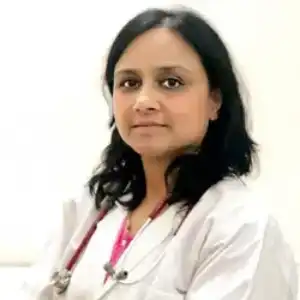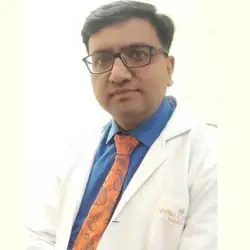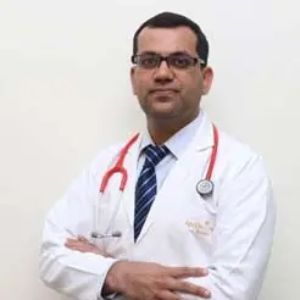What is Pediatric Orthopedics?
A discipline of medicine called pediatric orthopedics focuses on treating children's bones, muscles, and joints. A pediatric orthopedist is a specialist who focuses on treating those regions in children of all ages, from newborns to teens. In addition to providing non-invasive treatments like casts or limb braces, pediatric orthopedists (also known as pediatric orthopedic surgeons) can do surgery when necessary.
Children's bodies are still developing, thus their joints, muscles, and bones are quite different from those of adults. Typically, if problems emerge, a pediatric orthopedist is recommended to parents by the child's doctor. Joint, muscle, and bone is also called musculoskeletal issues. Pediatric orthopedic surgeons generally operate in specialized pediatric hospitals to provide children with many medical issues with the interdisciplinary care they require to flourish.
What Does a Pediatric Orthopedist Do?
Pediatric orthopedists aim to concentrate their medical practice on treating children. Both advanced training and practical experience in the field help them to understand the particulars of treating children medically and surgically.
Pediatric orthopedic surgeons are medical professionals who have attained the following degrees and certifications:
- Has a medical degree from a recognized institution (generally 4 years)
- Completed a residency programme in orthopedic surgery that is recognized (generally 5 years)
- Completed extra speciality training in pediatric spinal deformity or orthopedics (generally 1 year)
The parents must speak with their pediatric orthopedist to create the proper treatment plan for their kids. They have substantial formal education, training, and real-world experience. They have received specialized training on how to discuss medical issues with children. Children not only experience physical problems differently but also how they handle them.
Symptoms or Causes to See a Pediatric Orthopedist
Musculoskeletal issues in children differ from those in adults. Children are still developing, therefore their bodies may react to an accident, an infection, or a deformity quite differently than an adult body would. What is seen to be a problem in a kid is often a growth variance that will go away on its own over time. But, still, various problems are unique to the growing body of a child and are not found in adults.
The doctors diagnose, treat, and manage the below-mentioned range of problems in children -
- Abnormalities in the growing process
- Scoliosis
- Broken bones
- Bone and joint infections
- Clubfoot
- Sports injuries
- Spinal issues
- Ankle or foot surgeries
- Nerve issues
- Limb deformities
- Issues in walking or moving
The surgeons might also work in coordination with other specialities as part of a broad medical team to treat complicated conditions. Such conditions require a combination of treatment of which orthopedist is a part. They are as below -
- Bone tumours or bone cancer
- Cerebral palsy
- Juvenile arthritis
- Muscular dystrophy
- Spina bifida
Remedies and Treatment advised and practiced by Pediatric Orthopedist
Children have unique physical, mental, or emotional characteristics. They can't always express what's bothering them, respond to questions from the doctor, or behave patiently and cooperatively while getting a physical. They might experience fear or anxiety even just from being in a medical facility or hospital. For this, we have to form an engaging environment.
This starts with clinics that are arranged and decorated with children in mind.
The process of treatment starts with diagnosis. The doctor may ask parents about the symptoms and issues with the child primarily but parents are expected to assist their child in answering or providing the information. In addition, the doctor may review the patient’s birth, development, and family history. Then the doctor may conduct a physical examination of the child. A pediatric orthopedic surgeon may need to think beyond the box while examining young patients, such as by watching them run, play, or use things.
After a full examination to have an accurate diagnosis he may refer below the mentioned test -
- X-rays, a CT scan, an MRI scan, or an ultrasound
- Casting or splinting
- A blood draw for laboratory testing
The treatment is advised considering the child's age and problem. They are as below -
- Casting and bracing - There are fractures that can be treated without surgery.
Surgery - To treat limb length differences or other deformity.
Request an appointment at Apollo Cradle, DELHI-NCR - Chirag Enclave. Call 1860-500-4424 to book an appointment.
It is a pediatric condition of neural tube defect in the spinal cord of babies.
It is a by-birth disorder of movement and posture.
It is a condition of abnormal curves in the spine.
It is a discipline of medicine that deals with the treatment and care of infants and children up to the age of 18 years.
No, some can be treated by applying casting and braces.
Our Doctors
Treatments
- Anaesthesia & Pain Management
- General Pediatrics
- Growth Chart
- Newborn Screening
- Pediatric Allergy
- Pediatric Dermatology
- Pediatric Endocrinology
- Pediatric Nutrition
- Pediatric Orthopedics
- Pediatric Psychology
- Pediatric Surgery & Urology
- ROP Screening
- Stem Cell banking
- Vaccination/Immunisation schedule

 93 Patient Satisfaction Score
93 Patient Satisfaction Score


